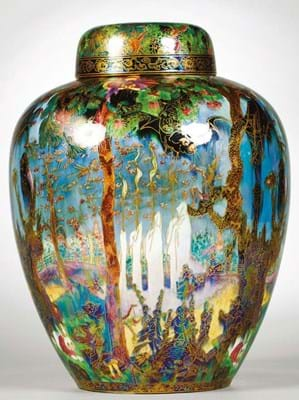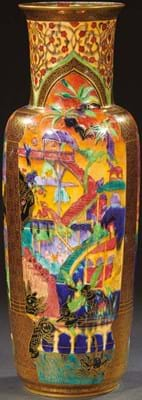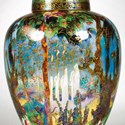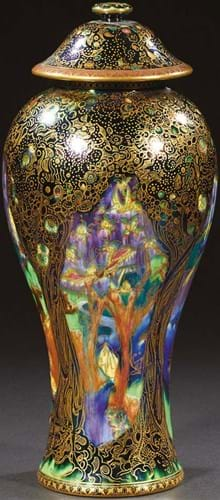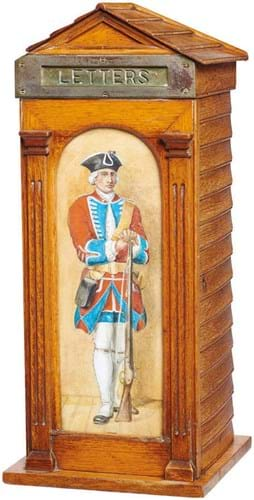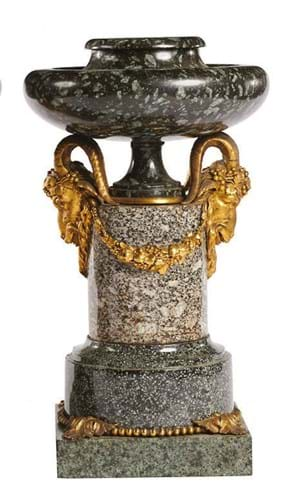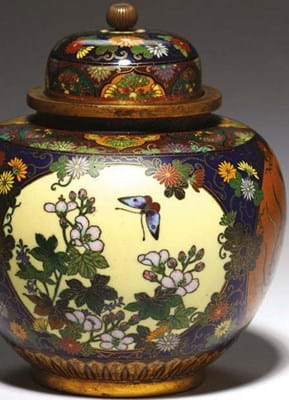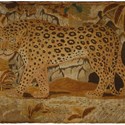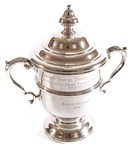Most seasoned regional auctioneers know precisely where the bodies are buried – occasionally calling in on local collectors and country houses on matters of insurance, tax planning, probate or to aid with the sale of unwanted chattels. But they also know not to judge the book by its cover.
Nottingham auctioneer Nigel Kirk was recently invited to value the estate of a local gentleman who had been a friendly regular viewer and occasional bidder at Mellors & Kirk sales.
“With the business of buying and selling at auction transformed by technology, I enjoy more than ever getting to know those who turn up to view the sales in person,” he said.
“Collectors like nothing better than imparting their knowledge – but as to what they’ve actually got they can, understandably, be circumspect.”
On this visit to “an inconspicuous first-floor apartment, right under my nose” he was amazed to find an impressive collection of Wedgwood Fairyland lustre. Evidently the pieces (all bar one of 15 in perfect condition with little wear to the gilding) had been acquired in the 1970s when the vendor had lived in London.
Breakthroughs and borrowings
At its peak in the 1920s, Daisy Makeig-Jones’ Fairyland range numbered dozens of shapes and close to 60 patterns. She combined technical breakthroughs – in particular the creation of a rainbow of liquid lustre colours – with borrowings from a rich variety of Victorian and later published material, to create a playful world of pixies, elves, imps and will-o-the-wisps.
The opening page of a trade booklet titled Wedgwood Fairyland Ware (1921) page reads: “The doors of Fairyland are many but hard to find. Some are hidden in hollow trees or caves, others are in wells or lakes, or at the bottom of the sea.
“It’s possible to get there by climbing up a rainbow, a sunbeam, a moonbeam or by getting a leprechaun to make you a pair of fairy shoes.”
Important pieces
Some important pieces were on offer in the Mellors & Kirk auction which resulted, on June 26. Items from this collection included one of the 14in (35cm) high ginger jars or ‘malfrey pots’ that were among the largest and most impressive pieces in the range and a favourite at international exhibitions in the English-speaking colonies.
This example was decorated in the desirable pattern number 24968, better known as Ghostly Wood, and to the cover with design dubbed The Owls of Wisdom. A near-identical piece was sold at Sworders back in October together with a 1926 receipt from a Christchurch, New Zealand, retailer for £31 10s for £21,000 (the same auctioneers had taken £29,500 for another in 2013). This one sold to an internet bidder at the lower end of a £15,000-20,000 estimate (plus 17.5% buyer’s premium).
A Ghostly Wood charger measuring 15in (38cm) across, similar to another sold at Woolley & Wallis of Salisbury in October for £14,000, sold at the low estimate of £8000, again to a buyer using thesaleroom.com.
The market for Fairyland, that for so long was based primarily in the US and Canada, is undeniably softer today than it was a decade ago. With plenty of material on the market (Bonhams’ sale of the Kaplan collection in Knightsbridge a year ago dispersed the stock of one of the leading dealers in the field), it is a buyer’s market. Nonetheless, at re-calibrated price levels demand can match supply.
In Nottingham a smaller malfrey pot and cover, 10in (25cm) high, decorated in the Candlemas pattern, sold at £4200. An unusual 10in (25cm) vase and cover decorated with the Sycamore Tree pattern and featuring both the Leaf Fairy and the Elves on a Branch designs, sold at £3000 and a similar 12in (29cm) vessel decorated with the Jewelled Tree pattern took £3200. A large 14in (25cm) vase in the Pillar pattern from the co-called ‘Flame’ Fairyland range with its mottled orange-red ground took £3200.
This sale was also memorable for the discovery of a Pugin-Hardman letter box, probably made for the Palace of Westminster. As reported in last week’s issue (ATG No 2400), this was a genuine ‘barn find’ offered in dry, rusted, cracked and cobwebbed condition. The buyer at £4200 had no plans to do more than blow the dust off it.
Sold alongside a novel 13in (33cm) Victorian posting box made in the form of a sentry box sold for £5000 (estimate £300-500), it did not look expensive. The latter was the collectable type set with a glazed watercolour of an officer – in this case of the 8th King’s Regiment of Foot – but it has been a while since one has sold for quite so much.
Ruskin design
Another textbook example of Victorian decorative art was a wrought-iron fire shovel made to a design by John Ruskin (1819-1900) by the Coniston blacksmith Tom Bowness. There are two examples of this shovel at Ruskin’s Lakeland home, Brantwood, with this third acquired by a local antiques dealer Elizabeth Tyson (1878-1970) of Busk House, Ambleside, at the Brantwood contents sale in 1931. It was a modest piece but provenance sold it at £1000.
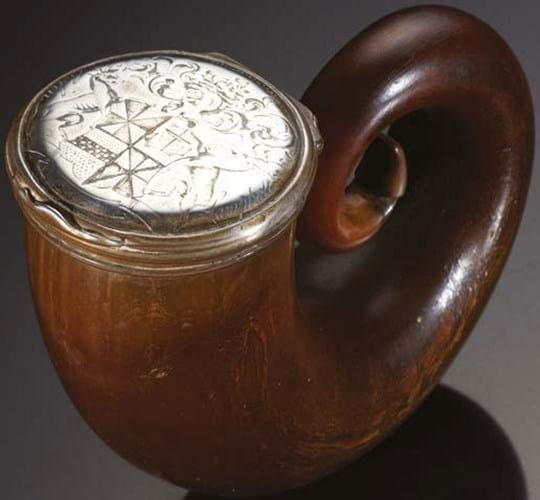
Scottish silver-mounted snuff mull with a Jacobite history – £2800 at Mellors & Kirk.
A Scottish silver-mounted snuff mull described as “a remarkable, if macabre memento, of one of the most fervent leaders of the Jacobite Rising of 1745” sold for £2800. Made c.1740, it had belonged to Arthur Elphinstone, 6th Lord Balmerino (1688-1746). After capture on the battlefield of Culloden he was beheaded on Tower Hill in 1746 after issuing the unrepentant cri de coeur: “If I had a thousand lives, I would lay them all down in the same cause.”
The inscription to the mull, that include Balmerino’s crest, read: Given by him on the scaffold to the officer on guard. If Lost to be Returned to Mr Josh. Knowles No 2 New Inn London.
In terms of straightforward quality it was hard to better a pair of French ormolu mounted green porphyry and marble tazza. Standing 14in (36cm) high and modelled to a goût grec with rams’ heads and swags of acanthus, these probably dated to the Napoleon III period but might have been earlier. They came by descent from Captain George Anson Byron, 8th Baron Byron (1818-70) or his nephew George Frederick William Byron, 9th Baron Byron (1855- 1917) – one of many lots with this provenance sold by the auction house in recent sales. They took £13,000 (estimate £6000-8000).
Longcases remain problematic but regulators that sacrificed ostentation for accuracy are an exception.
Also sold at £13,000 against similar expectations was an early 19th century month-going regulator by Thomas Earnshaw that combined a substantial well-engineered brass movement with deadbeat escapement, maintaining power, five-wheel train and mercury pendulum within a typically restrained brass inlaid mahogany and ebony case of the period. The discoloured silvering to the dial was indicative of a clock that was in unrestored original condition.
Condition is so often the key variable in a market that allows buyers to pick and choose.
A Regency embroidered woolwork picture of a leopard c.1820, 23in x 2ft 5in (59 x 74cm), another discovery in a local house, sold at £4000 (estimate £600-1000), while a large 3ft (90cm) wide Swiss ‘Black Forest’ type stained limewood carving of a brown bear on all fours c.1890 took £7000 (estimate £800-1200). Both were in good and unrestored condition.
A small 4½in (11.5cm) Meiji period cloisonné enamel vase and cover c.1890-95 in the manner of Namikawa Yasuyiki was in undamaged condition and sold at £9500 (estimate £5000-6000). The decoration included dragon and phoenix panels alternating with primrose ground reserves of blossom and butterflies.


